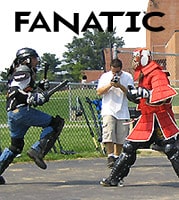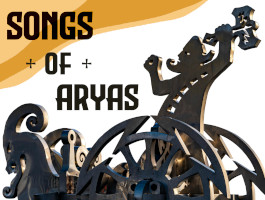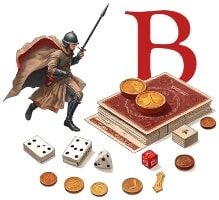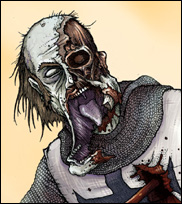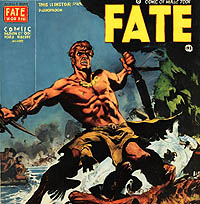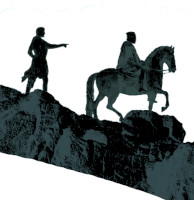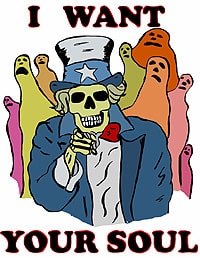In his most unredeemable literary sin, Howard establishes that not only are the ultimate villains of his yarn black, but they are not humans, but devils. Never mind that they are not men, but devils in man form, that they are more advanced than the white races, that they prey upon a multiracial world in which they enslave yellow, red and even blue folk as well, that they are vastly more intelligent than the white apemen and that their queen is the most beautiful figure the protagonist has ever beheld—one cannot be accepted as a postmodern literary figure if black characters are not noble martyrs and sweet-souled redemptionists. Conversely, In Howard’s day, there is no way his vision of a demonic, black master race could be countenanced in an era when blacks were generally depicted as good obedient boys and girls or inept foes.
The trivial racialism aside that haunts reviews of this book, the aspect of the black Yaga race in Almuric and the question of their Queen, is of great interest to the science-fiction reader and the mythic reader.
Queen Yasmeena is a queen in the sense of social insects. Every male of her species is her consort. The wings of lesser females are clipped and they remain more domesticated than the enthralled males. She rules an alternately submissive and raging feminine hive that preys upon the lesser races, essentially the threat posed by the Aliens in the science-fiction franchise by the same name, but clothed in a terrible beauty.
On a mythic level, Howard has remained purely Indo-European and dispensed with the idea of divinity as being a deistic immensity of unknowable omniscience, or of a just intercessor. Rather, the image of divinity is one of terrible, ruthlessness, of evil, yet subject to the tides of Fate. Here, the general human fixation expressed by domesticated races with positive divinity in human form, is turned on its head, with the divine expressed as utterly beautiful to behold but terrible to dwell under. The logic of the dysfunctional Hellenic and Norse mythos of squabbling and ultimately doomed deities is focused on a single wondrous figure with glinting eyes and a will beyond human scale. To this reader, the figure of Yasmeena is far more probable and compelling than the Virgin Mother of my own Catholic tradition. Howard’s mythology remains one of “the animal powers” not “the seeded earth,” and is the better for it.
He must have understood at some level that his abandonment of the traditional, conflicted, domesticated hero for the non-conflicted, primal hero required a villain that was no mere degenerate, but an elemental monstrosity, that was, like Earth and Almuric, both beautiful and terrible.
Yasmeena is such a wicked character she deserves to speak for herself, speaking to Esau, as if a jealous, feminine civilization spoke to the last primal man, “Of old, men passed from star to star. There are beings now which traverse the cosmos. I would study you. You shall live—for a while, at least. But you must wear those chains, for I read the fury of the beast in your eyes, and know you would rend me if you could.”
Evil should be beautiful and in Howard’s hands it was magically so.


